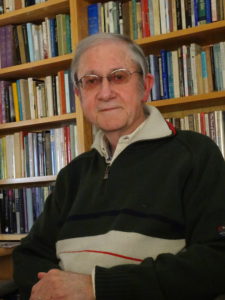By Edward Fowler //
In 1942, the U.S. War Department ordered 112,000 West Coast residents of Japanese descent, two thirds of them American citizens, to move out of their homes, mostly in California, to ten “relocation centers” in seven states. In the months after Pearl Harbor, those with a Japanese surname had become suspect by default. None were charged with a crime. The last of those held were released in 1945. Many, having lost everything, could not return to their homes.
Japanese Americans learned the hard way that the Constitution provided no protection from uprooting and confinement. Yet what’s important about this eighty-year-old event is not that it happened to them, but that it happened at all.
Those who suffered the ordeal have plenty of stories to tell, as I learned from Glenn Tanaka, who with his wife Shirley runs Tanaka Farms, a private enterprise on Irvine city land just off the 405 Freeway, not far from my home for thirty years near the UC Irvine campus.
In addition to growing produce and offering agricultural tours, Glenn is compiling autobiographies of Japanese American farming families. Many live in Orange County and have relatives who were incarcerated during the War. (https://www.walkthefarm.org/jafarms The site’s information can also be viewed at the farm.)
All shared the same dark episode in our national history, but each experience was unique. Two Orange County family histories are nothing less than extraordinary.
The Kanno family settled in Talbert, east of Huntington Beach, in the early 1900s, and grew asparagus and tomatoes. In 1942, the family was sent to the Poston, Arizona camp. Poston, population 17,800 and the state’s third largest “city” during the war, was hastily built by Del Webb, whose company later gained fame for constructing America’s first retirement community. It went on to build, among others, several large Las Vegas hotels, Anaheim Stadium and the Anaheim Convention Center. Needless to say, they all outshined the camp’s warped, knot-holed barracks, which let in wind, sand, heat, and cold.
Because of “relocation,” Jim, one of the Kanno sons, was unable to finish high school. After the war, Jim entered politics, worked to incorporate Talbert as the city of Fountain Valley in 1957, and was elected the city’s first mayor. He later spearheaded the effort to turn a naval landing field, built in the year his family was incarcerated, into Mile Square Park. At long last, in 1999, he received his Santa Ana High School, Class of 1943 diploma.
The Masuda family, who farmed in Westminster, Tustin, and Talbert, had three sons in the army during the war. Kazuo, the eldest, died in battle. In December 1945, his sister received the Distinguished Service Cross on his behalf from General Joseph Stilwell at the doorstep of her Talbert home, where she (like many others) had faced threats upon her return that spring. Later that day at a rally in Santa Ana, a U.S. army captain declared:
Blood that has soaked into the sands of a beach is all one color. America stands unique in the world, the only country not founded on race but on a way, an ideal. Not in spite of, but because of our polyglot background, we have had all the strength in the world. That is the American way.
The captain retired soon thereafter and resumed his acting career. Four decades later, in 1988 and as the 40th president of the United States, Ronald Reagan signed H.R. 442, a congressional bill named after the 442nd Regimental Combat Team (the highly decorated, all-Japanese American unit that fought in Europe), which provided restitution to each camp survivor. Reagan first opposed the bill but reconsidered after Kazuo’s younger sister sent a letter reminding him of his part in the Santa Ana rally.*
I visited Poston in the fall of 2022. A few ruins remain. It is the site of an annual pilgrimage for former camp inmates along with their descendants and supporters, many from Orange County. We gathered in front of a large, roofless, building – the carcass of an elementary school auditorium built for children who were American born yet stripped of their rights as Americans.
Is this episode a thing of the past? The late Justice Antonin Scalia didn’t think so. He commented on the Supreme Court’s 1944 decision to uphold Japanese American confinement. “‘In times of war, the laws fall silent.’ [This] is the reality. . . . [Y]ou are kidding yourself if you think the same thing will not happen again.”**
The question, then, is: should we accept this troubling assessment as “reality”?
__________
* I have added information from http://www.discovernikkei.org/en/journal/2012/11/23/masuda-family-1/ to the Legacy Wall narrative. See esp. parts 5 & 6.
** Citations taken from a February 8, 2014, Washington Post article by Ilya Somin:

EDWARD FOWLER taught in the East Asian Studies Dept. at UC Irvine. His field is Japan, and his best-known written work is San’ya Blues, an oral history of Tokyo day laborers. “Deathbed Photos,” excerpted from his memoir, appeared in the O.C. Writers “Friday Reads” in October 2020. “Trying Times” is part of an essay on the mass confinement of Japanese Americans during World War II.
EDITED BY Fred Klein.


A very good story.